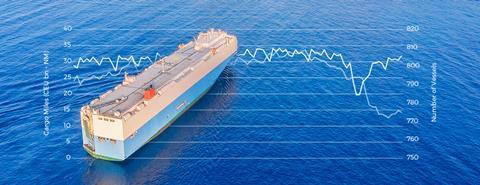VesselsValue reports that spending on newbuild vehicle carriers passed the USD3.2 billion mark last week – exceeding the previous six years combined investment in LCTC, PCTC and PCC ships.

The investment into new vehicle carriers tops USD4.4 billion if options are taken into consideration.
Japanese shipyards have raised prices to USD100 million for a dual-fuel LNG 7,000 CEU – up USD10 million over last year’s prices. Chinese yards have followed suit but maintain a healthy discount quoting USD88 million for an equivalent specification unit. All 40 vehicle carriers confirmed this year (56 including options) are dual-fuel LNG powered, forming a premier PCTC/LCTC asset class for an electrified car market, said VesselsValue.
The analyst said that rapid steel price inflation combined with a post-pandemic supply vacuum have driven the newbuild price surge.
Second-hand sales prices started booming during the second quarter of 2021, punctuated by the USD23 million sale of the 23-year-old Asian Kin – a 6,400 CEU vessel from Hyundai Heavy. Such price inflation has inevitably led to talks of a supercycle buoyed by a hot charter market, said VesselsValue.
Firmed rates of USD30,000 per day for a mid-size 5,000 CEU, and USD35,000 per day for 6,500 CEU, are earning owners USD8-10 million per annum after operational expenditure. “It’s a seller’s market, buyers beware,” the analyst warned.
Current market conditions could last into 2024 based on an underlying lack of tonnage. The foundations for short supply can be originated back to 2016 when orders averaged just five vessels per year until 2021. Owners have reacted this year with a respectable number going on a major shopping spree, but they are paying a high price for leaving it late.
















